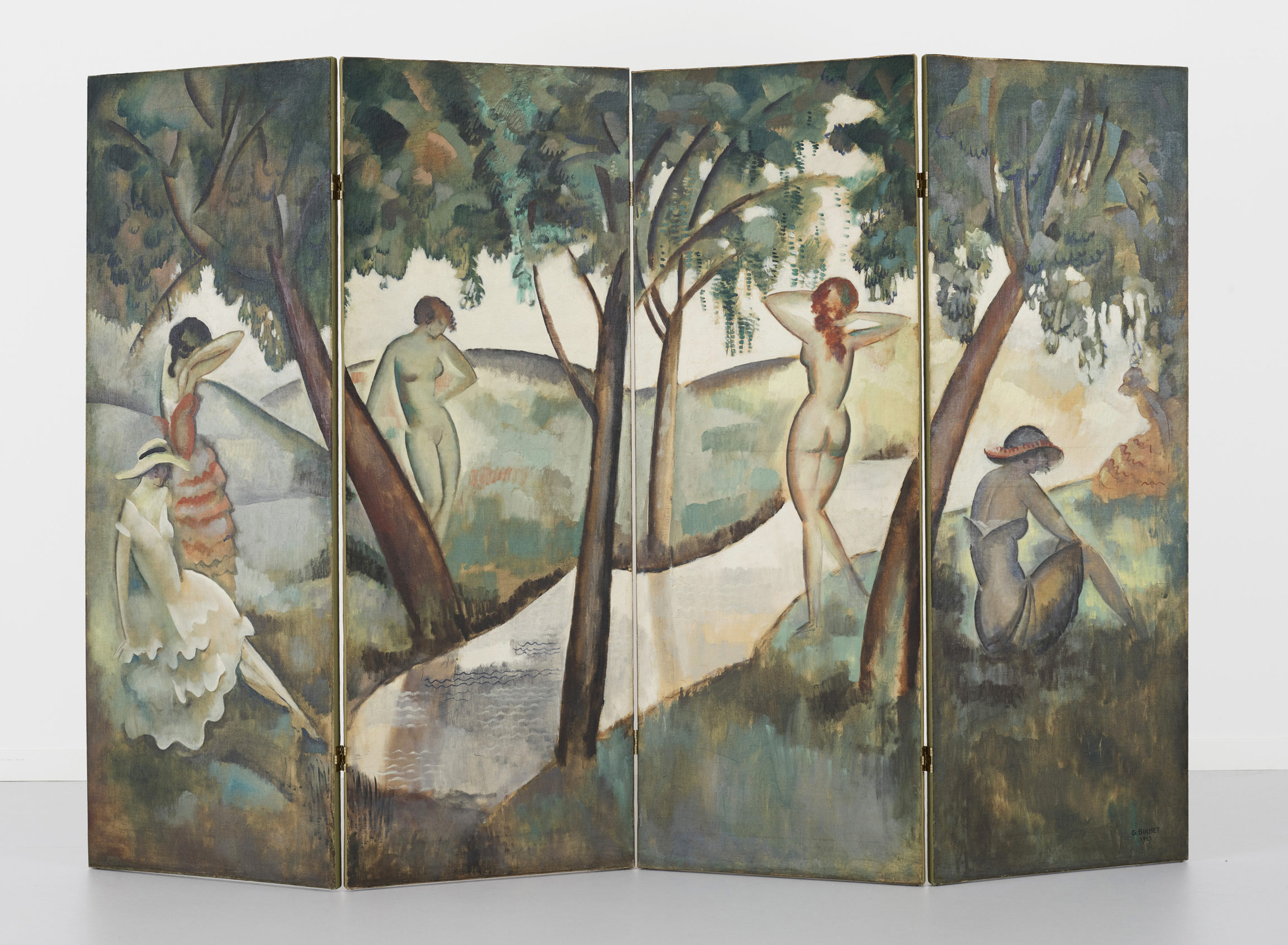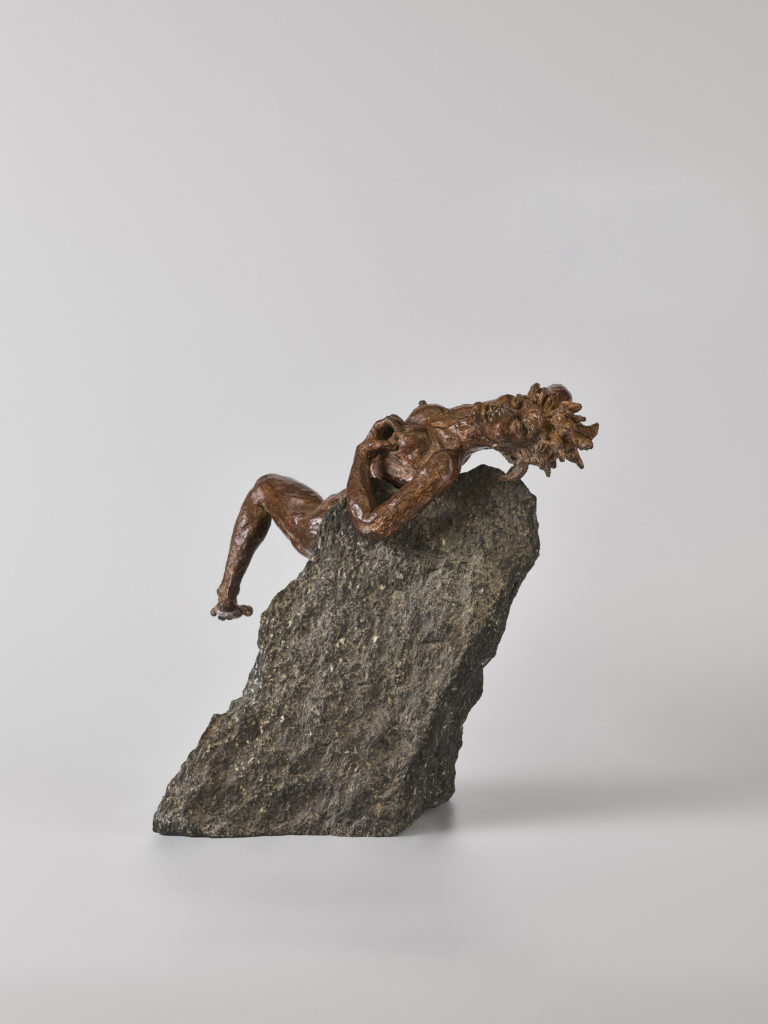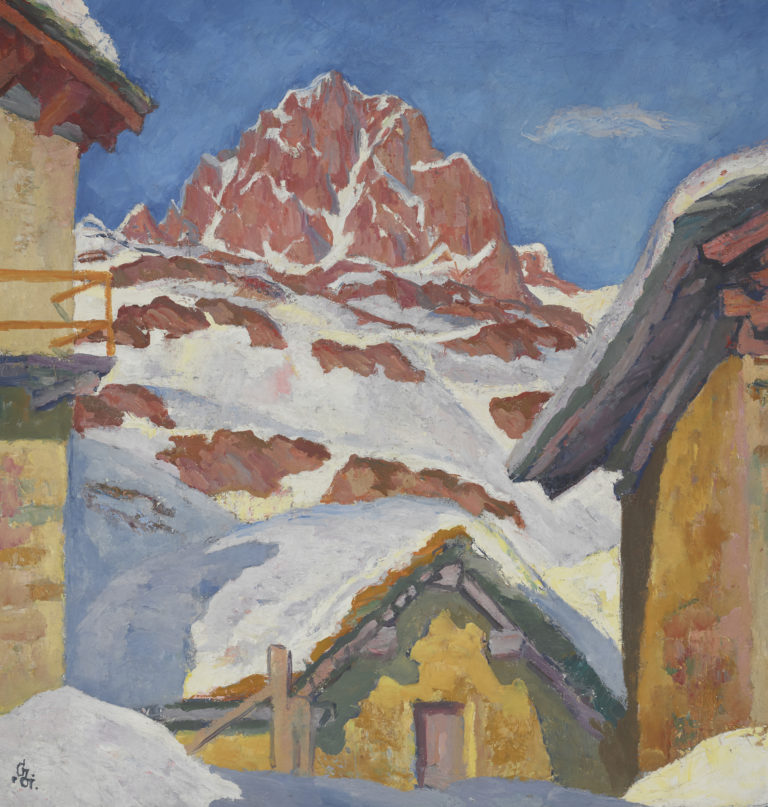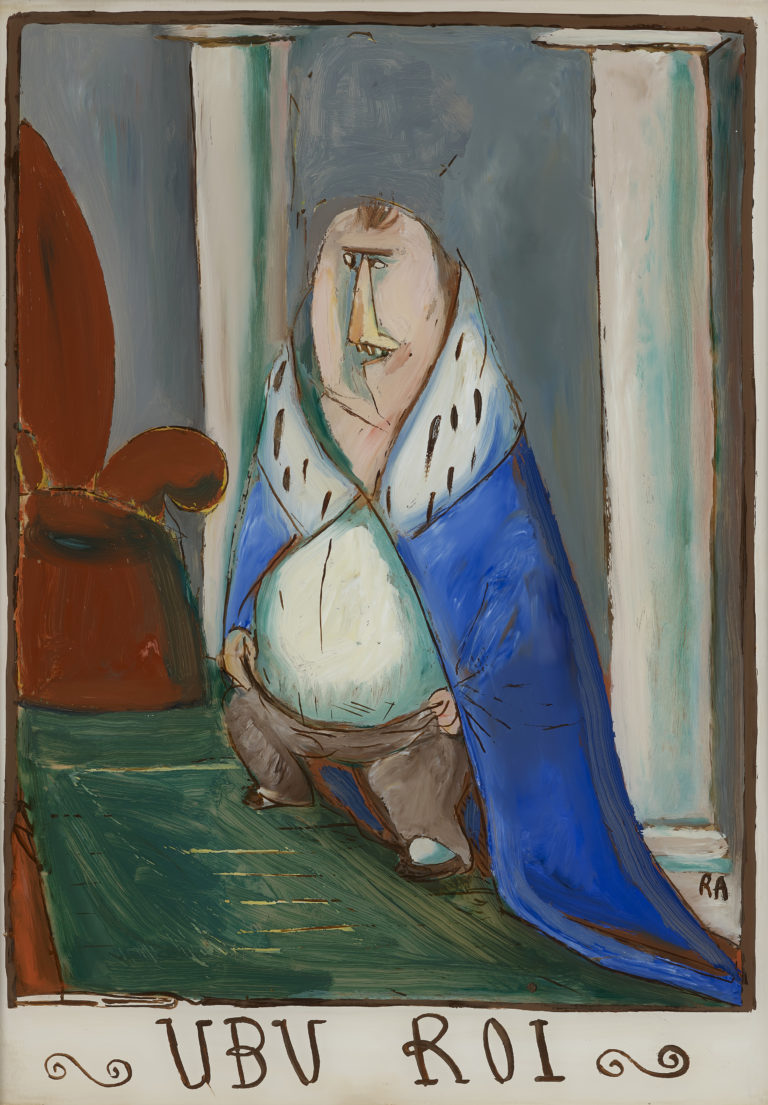Bibliography
Paul-André Jaccard, Gustave Buchet. Accusé de peindre, Milan, 5 Continents, 2022: 94-104, fig. 96.
Elizabeth Fischer and Catherine Lepdor (eds.), Modes et tableaux. Œuvres de la collection et costumes de 1700 aux années folles, Les Cahiers du Musée des Beaux-Arts de Lausanne n° 10, 2000: n. 21.
Erika Billeter (ed.), Chefs-d’œuvre du Musée Cantonal des Beaux-Arts de Lausanne: regard sur 150 tableaux, Lausanne, 1989: 264-265.




The spring of 1920 saw Gustave Buchet leave Geneva for Paris, where he was to spend the next twenty or so years. By 1922 he was courting Marguerite Robert de Rutté, who became his bride in 1929. Early in 1924, Marguerite opened a fashion house under the name Lise Darcy. Buchet provided several hundred designs for hats, cushions, ties, scarves, cosies, bags, and reticules. The patterns he came up with reflected the influence of the formalist school of decorative arts, inflected by non-figurative cubism and neo-Plasticism.
In the same years, Buchet also designed screens. This work was commissioned by his friend Guy Haviland, a well-known art collector and the Paris representative of the porcelain brand of the same name. The four large oil-painted canvas panels show the artist exploring various forms of expression. While his painting and sculpture experimented with Purism and post-Cubism, this commission let him play with rhythmical decoration and stylisation in figurative art inspired by Paul Cézanne.
The silhouettes of women are shown from behind, facing the viewer, and in three-quarter profile. The figures, some nude, are reduced to an interplay of curves and counter-curves. The simple lines reflect styling for women in the Roaring Twenties, casting off corsets to create longer, flatter lines in the upper torso. The bottom hems of the day dresses, still a decent length, bring a sense of movement in ruches, ruffles and slits. The long, slender bodies are counterbalanced by graceful, broad-brimmed sun hats.